Opportunities
The dynamic and complex external operating environment presents challenges and opportunities, impacting Tata Steel’s strategy execution and value creation efforts.
Trends shaping India’s steel industry
Urbanisation
590 million
Expected population to live in
Indian cities by 20301
Capex cycle
`143 trillion
Expected investments by India
towards its infrastructure by 20302
Rise in living standards
USD 4,000
Forecasted per capita income
of India
by 2030 from current
levels of ~$2,4503
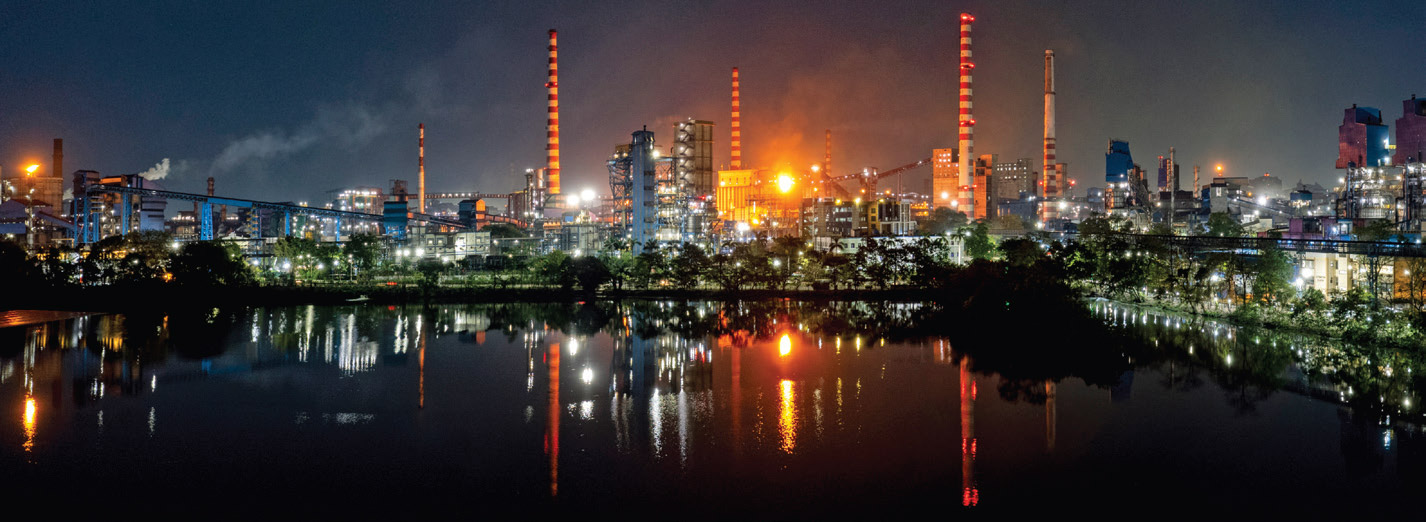
Tata Steel Jamshedpur,
ResponsibleSteelTM certified site
Strong growth in India and
sustainability focus in Europe
Driven by strong domestic consumer demand, infrastructure investments, heightened manufacturing activities, India is expected to continue its growth trajectory. The country is the secondlargest producer and consumer of crude steel globally and is expected to report sustained growth aided by rapid pace of urbanisation, continued manufacturing push under ‘Atmanirbhar Bharat’ and low per capita consumption. Major projects under the National Infrastructure Pipeline and Gati Shakti Plan, including highways, railways, ports, and urban infrastructure, will significantly boost steel demand.
While India drives economic growth, Europe leads in policy development to accelerate the adoption of decarbonising processes and technologies across various sectors, encouraging both private and public enterprises. The collaboration in strategic procurement between India and Europe can reduce costs and enhance supply chain reliability. This synergy leverages Europe's policy advancements and India's economic momentum. Together, these efforts aim to foster sustainable growth and innovation. The unified approach highlights the potential for improved efficiency and environmental impact across continents.
Tata Steel is well-positioned to capitalise on the opportunities through its plans for capacity expansion in India and green steel transition in the Netherlands and the UK.
~300 MTPA
India’s targeted crude steel capacity by FY2030-314
1National Institute of Urban Affairs - India's Urban Story: SDGs and Urban Indices Across States
2CRISIL Infrastructure Yearbook 2023
3Standard Chartered Weekly Market View - July 21, 2023
4Ministry of Steel, Government of India
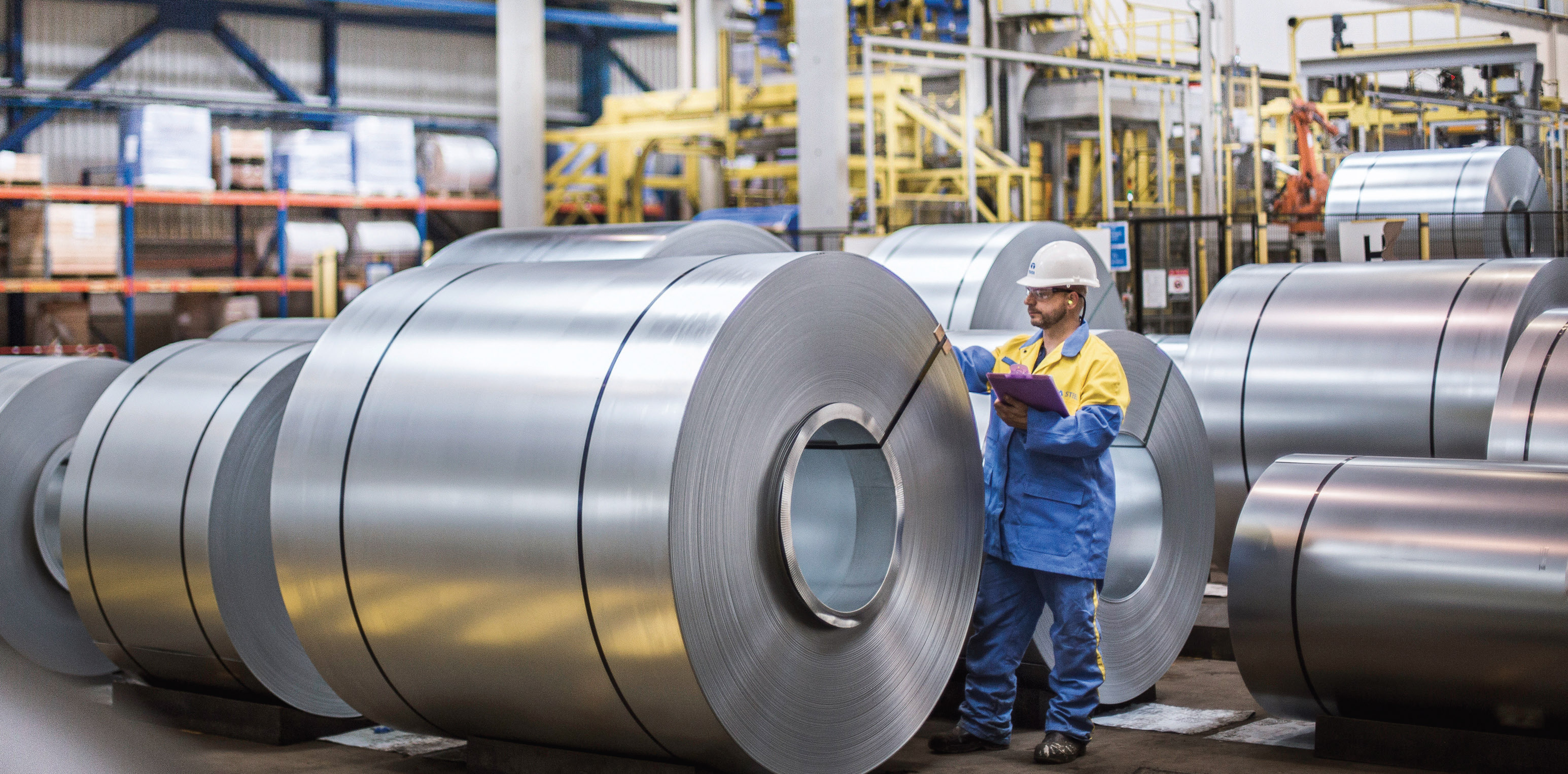
Zeremis® Carbon Lite, a declaration-based, low carbon emission steel solution with the potential for up to 100% reduction in CO2 intensity
Customer centricity
and digitisation
Customer expectations and steel demand are evolving, along with the channels for product and service delivery. India's rapid urbanisation necessitates faster construction, making modularisation crucial for shorter building times and enhanced aesthetics. Rising per capita income is boosting demand for consumer goods, white goods, and automobiles. Additionally, digital commerce is growing its influence in heavy industries. This shift towards digital platforms is reshaping how products and services are delivered in the steel sector. The integration of technology in construction and manufacturing is becoming increasingly important.
India’s rapid urbanisation demands faster construction. Modularisation which facilitates a shorter building time and better aesthetics is, therefore, essential. The improving per capita income bolsters the demand for consumer goods, white goods, and automobiles.
A culture of customer obsession and technology-led innovation will help Tata Steel stand out and become the supplier of choice for discerning consumers. Tata Steel is expanding its digital footprint through platforms like Aashiyana and DigECA, targeting individual home builders and small enterprises respectively. The BaanClickBuild digital application scales online retail sales in Thailand. Additionally, COMPASS and Nexus, supply chain visibility solutions, are deployed for partners across India and Europe, respectively
In the UK, Tata Steel signed an agreement with the automotive supplier Gestamp to nearly double the percentage of recycled steel in the components they supply to the automotive sector, as the two organisations work to increase the circularity of steel in the automotive supply chain.
For the European market, Tata Steel offers mass-balanced green steel products such as Zeremis® Carbon Lite and Optemis® Carbon Lite, Hilumin® electroplated steel for battery casings in electric vehicles, and MagiZinc® galvanised steel for solar energy applications.
Advanced data analytics and modelling have enabled industries to create digital twins and operate their assets remotely. In March 2024, the Company made two additions to its integrated Remote Operation Centre (i-ROC): an integrated Maintenance Excellence Centre (i-MEC) for datadriven maintenance decision making across its Jamshedpur, Kalinganagar and Meramandali facilities, and an integrated Coke Plant Remote Operation Centre (i-CPROC). The i-ROC also comprises an integrated Remote Agglomerates Centre and an integrated Remote Mining Supervision Centre. Tata Steel is the only steel player with three production locations at Jamshedpur, Kalinganagar, and IJmuiden to be included in the World Economic Forum’s Global Lighthouse network for the implementation of Industry 4.0 technologies. The Company has taken various other initiatives in the digital space towards Industry 4.0.
Intellectual Capital: Industry 4.0 - Knowhow and Capabilities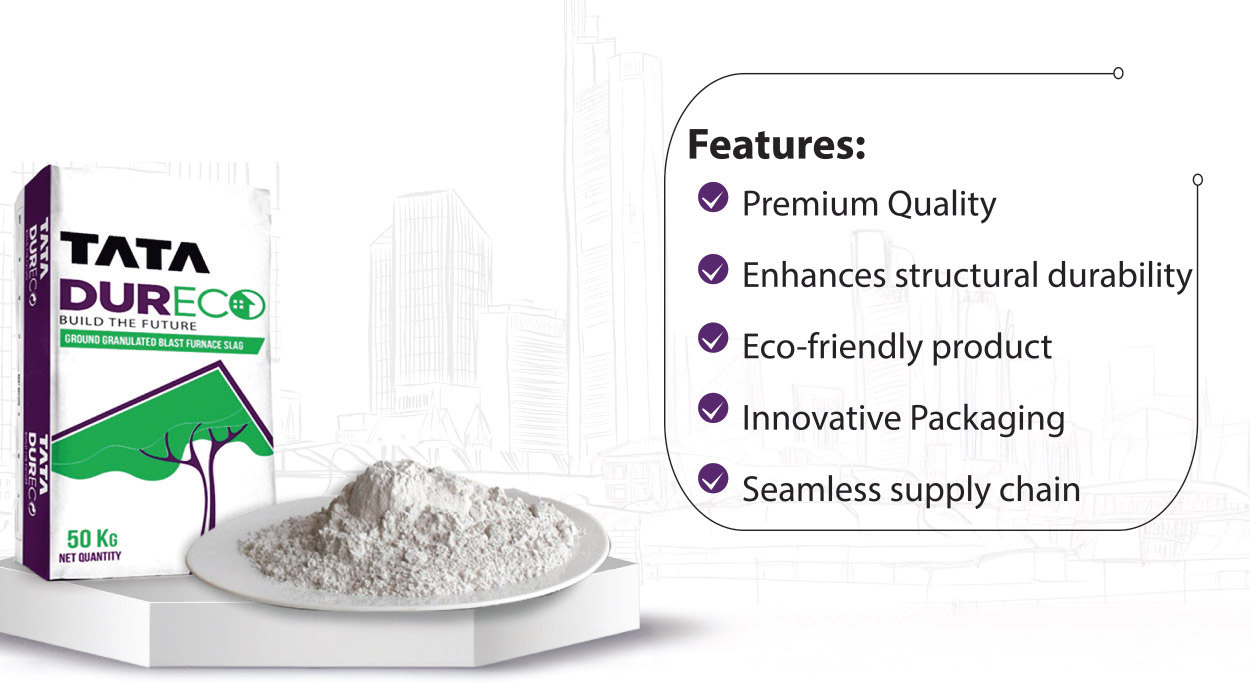
Launched Tata Dureco in FY2023-24, a branded ground granulated blast furnace slag (GGBS), with extensive application in constructing flyovers, bridges, roads, etc.
Driving sustainability
in manufacturing
Europe leads in policy development for adopting decarbonising processes and technologies across sectors, India is also following this trend and has increased its focus towards enhancing focus on sustainability. This shift encourages both private and public enterprises towards sustainability. The global emphasis on sustainability has influenced consumer preferences, favouring renewable energy and energy-efficient construction and transportation solutions. Consequently, the market is seeing increased demand for green alternatives. These trends highlight a universal move towards a more sustainable future.
In the UK, Tata Steel has partnered with automotive supplier Gestamp to nearly double the percentage of recycled steel in automotive components, enhancing circularity in the supply chain. The Company is also advancing low technology readiness level projects in carbon capture, hydrogen reduction, and water consumption. With recent certifications, over 90% of Tata Steel's production in India is now from ResponsibleSteelTM certified sites. The Company is also constructing a 0.75 MTPA scrap-based electric arc furnace (EAF) in Ludhiana, Punjab, India to focus on a circular business model. Additionally, Tata Steel plans to replace one of its blast furnaces in the Netherlands with a Direct Reduced Iron EAF by 2030.
In December 2023, the Company launched Tata Dureco, a branded ground granulated blast furnace slag (GGBS), which serves as an alternative cementitious material in the construction industry.
Furthermore, Tata Steel has agreed with the UK Government to replace the two blast furnaces at Port Talbot with an EAF. This change is expected to reduce direct CO2 emissions by 50 million tonnes over the next decade.
Tata Steel promotes sustainable value creation by offering slag-based products such as Dhurvi Gold, Tata Aggreto, and Tata Nirman.
90%
Of the Company’s steel production in India comes from ResponsibleSteelTM certified sites
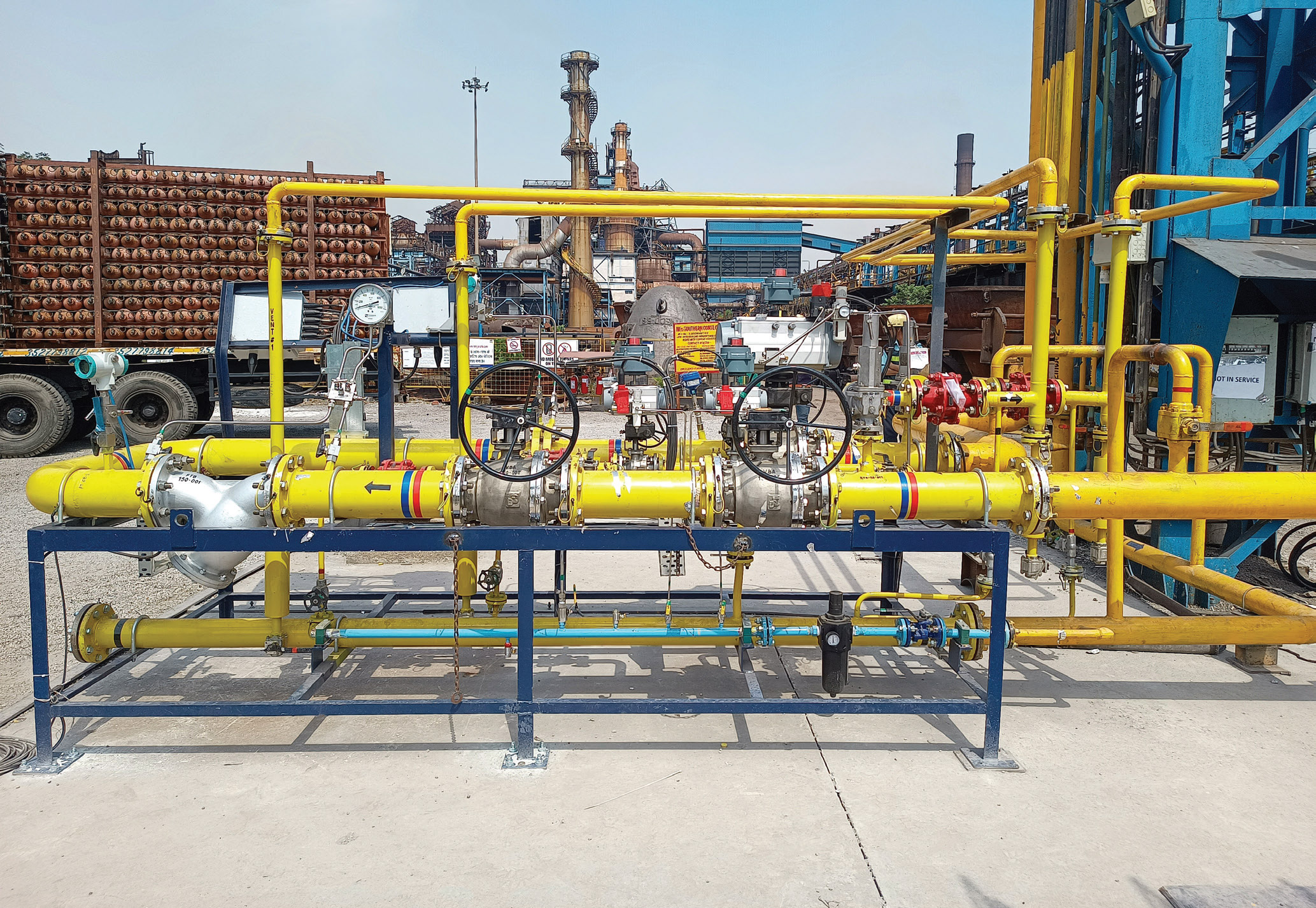
World’s first successful trial of record-high hydrogen injection in E Blast Furnace in Jamshedpur
Technology for
breakthrough innovation
Over time, the steel industry has advanced significantly, particularly in technology and modernisation. Today, technological advancements have made steel manufacturing more time and cost-efficient. As development trends continue to rise, new technological innovations promise to further enhance the industry by increasing client satisfaction and reducing environmental impact.
Tata Steel recognises that investing in cutting-edge technology is crucial to seizing growth opportunities and addressing business challenges effectively. As a leader in the steel industry, Tata Steel is committed to innovation, continually experimenting with, adopting, and scaling up new technologies. A notable milestone occurred in April 2023 when Tata Steel conducted a successful hydrogen injection trial, using 40% of the injection systems in the E Blast Furnace at Jamshedpur. This marked the first instance globally of continuously injecting such a large quantity of hydrogen into a blast furnace.
Within Tata Steel, the Alliances arm plays a pivotal role in forming technology partnerships with both industry peers and academic institutions. Meanwhile, the customerled innovation arm, Innovent, focuses on developing business-to-consumer (B2C) solutions that align with evolving consumer demands.
Tata Steel's startup engagement arm, Innoventure, has conducted proof-of-concept experiments and pilots with over 40 Indian and global startups. Their aim is to discover breakthrough solutions for sustainability and other challenges related to the value chain.
40+
Collaborations with Indian and global startups
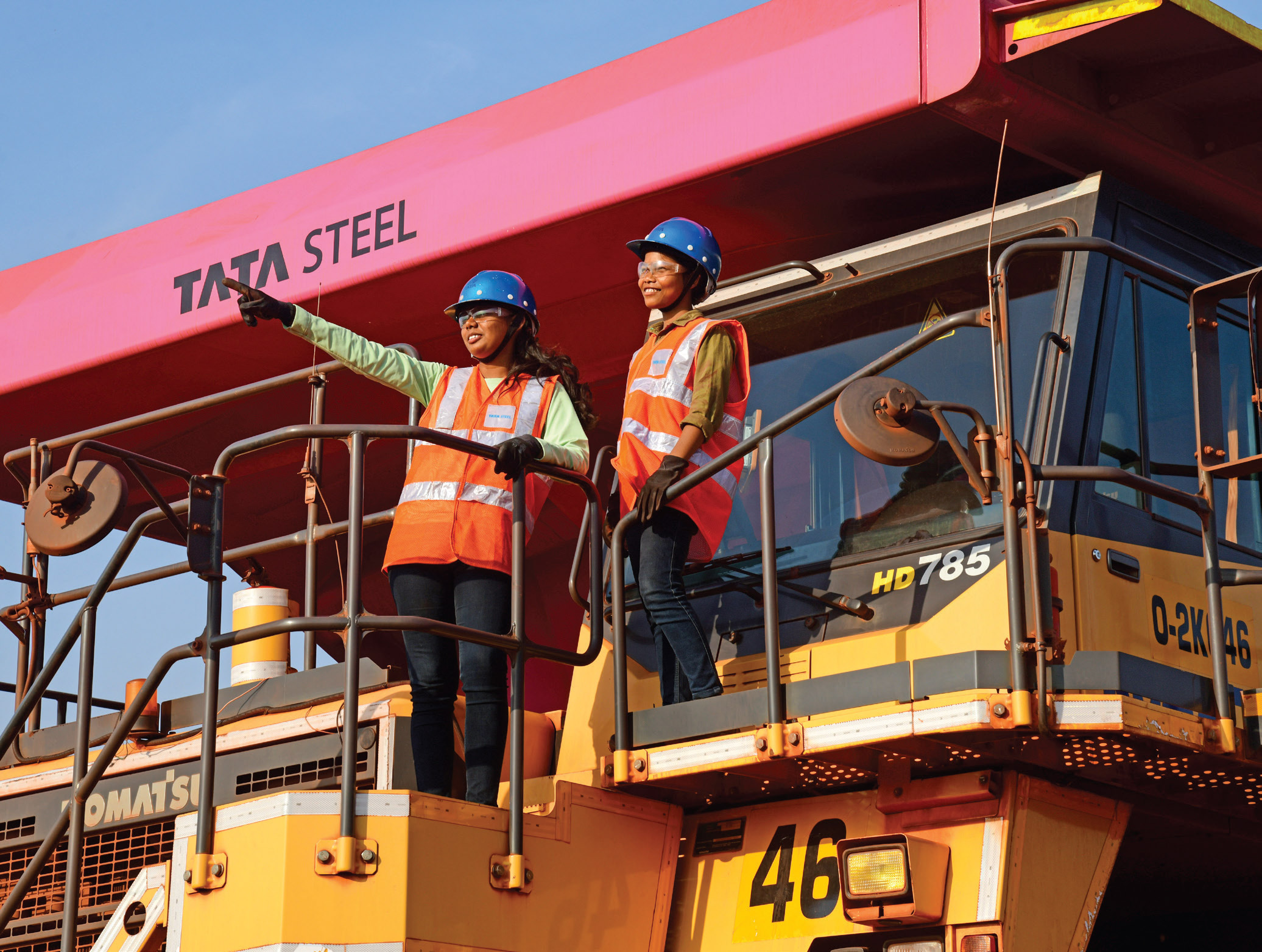
Women@Mines – Fostering a culture of inclusion
Developing a culture for
competitive advantage
Employees excel and find fulfilment in workplaces that prioritise purpose and maintain a strong organisational culture. A purpose-driven work environment emphasises aligning employees' roles with meaningful goals and values. This approach fosters engagement, satisfaction, and commitment among employees, ultimately enhancing productivity and overall success within the organisation.
Tata Steel continues to enhance its internal processes and initiatives aimed at fostering a culture of continuous improvement, prioritising safety, ethics, environmental stewardship, and community welfare. The Company has embraced agile ways of working (AWOW) to instil values such as creativity, adaptability, and strategic thinking into its operations and projects.
Tata Steel plays a significant role as a founding member of the Global Parity Alliance (GPA), underscoring its commitment to gender equality and inclusion. Recognised as a top employer for LGBT+ inclusion by the India Workplace Equality Index (IWEI) and the World Economic Forum.
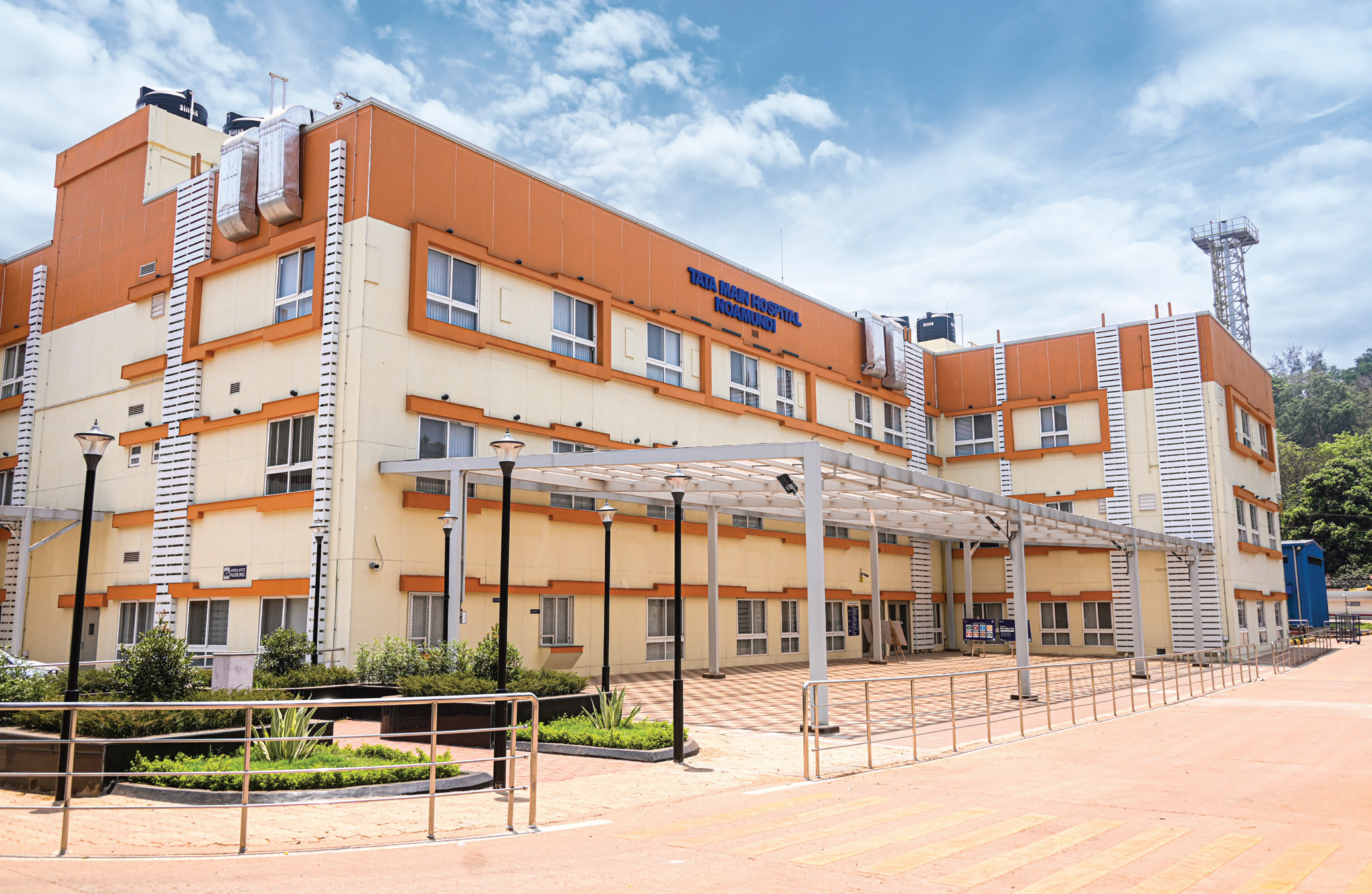
Tata Main Hospital, Noamundi, constructed using Nest-In's prefabricated solutions which doubled the construction speed while ensuring safety and sustainability
Adjacent businesses
as growth levers
Adjacent businesses enable companies to enter new markets and attract a broader customer base by leveraging existing expertise and brand recognition. This approach allows for the introduction of new products or services, such as a steel manufacturer expanding into construction chemicals or prefabricated building solutions. Diversifying revenue streams through adjacent businesses reduces dependency on a single product line, mitigates risk, and ensures steady income even during downturns. Additionally, adjacent businesses foster innovation through the cross-pollination of ideas and technologies, leading to unique value propositions and competitive advantages. Offering a comprehensive suite of related products or services enhances customer loyalty and retention, as customers prefer one-stop solutions for their varied needs. Expanding into adjacent businesses also grants companies strategic flexibility, allowing them to adapt swiftly to market changes and capitalize on emerging trends.
Nest-In leverages steel to provide a variety of prefabricated solutions, including sanitation facilities, portable cabins, and premium living spaces. Meanwhile, Pravesh specialises in factoryengineered steel doors and windows for both residential and commercial buildings. In the UK and the Netherlands, Tata Steel collaborates closely with partners to deliver cost-effective and environmentally friendly construction solutions. Notably, they offer innovations like lightweight composite floor decks that enable versatile open spaces.
Tata Steel's Pravesh and Nest-In businesses in India have strategically expanded their focus on Services and Solutions.